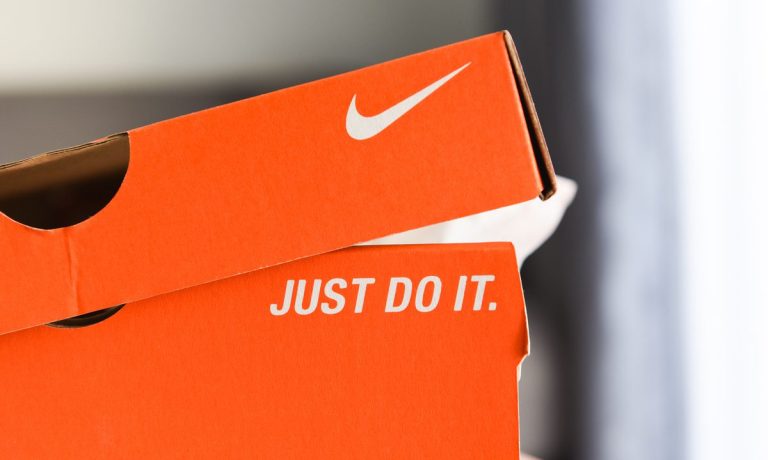
To hear CEO John Donahoe tell it, Nike is doing what it always does, staying on the offense.
“Our confidence as we look long term hasn’t changed one bit. We’ve been resolute in fueling innovation and our brand is as strong as ever,” said the tech-savvy 61-year-old former eBay chief who was brought on to transform the world’s largest athletic shoe and apparel company two-and-a-half years ago.
On the heels of a quarter that saw 5% revenue growth alongside a 25% drop in its stock price, the trials of transformation are visible as the 58-year-old company takes on a trio of challenges at once, including supply chain constraints, COVID-linked manufacturing and retail disruptions, and most recently, rapidly rising inflation.
“Consumer demand for all three of our brands — Nike, Jordan and Converse — remains incredibly strong and our growth in the third quarter would have been even higher if we had greater quantities of available inventory to meet marketplace demand,” Nike CFO Matt Friend said on the company’s fiscal third-quarter earnings call Monday afternoon (March 21).
“We are on a journey to create the marketplace of the future,” Friend added, including an increased amount of D2C sales via Nike Direct, and a reduced reliance on its retail partners, whose numbers he said are down more than 50% over the past four years.
About Those Partners
For a company that is on a first-name basis with dozens of the world’s greatest athletes (Sabrina, LeBron, Michael) it is perhaps unsurprising that it also actively partakes in daily affirmations of its own destiny and prospects.
“I would not trade our position with anyone,” Donahoe said before reassuring investors and analysts that its “marketplace strategy was a growth strategy” aimed at serving up a seamless, consistent experience wherever customers shop for Nike products — including Foot Locker, whose stock dropped 35% in a single day last month on reports that the brand accountable for 75% of its sales was cutting back on the nation’s largest retail chain of athletic footwear.
“To be crystal clear, Foot Locker always has been and always will be a large and important partner of Nike and that will continue to be the case,” Donahoe said, citing the distinct role this wholesale account plays in Nike’s new marketplace strategy given its deep cultural ties to basketball, streetwear and kids. “So just to be clear, they are one of our important partners going forward,” he added.
To that point, Friend said Nike was now moving into “the next phase” of its marketplace strategy, having “finished communicating the big account pivots” noting that wholesale partners will play an integral role authenticating its brands and creating scale of distribution via a larger retail footprint, albeit within an enterprise that is consistently, and purposefully, trending toward digital.
“Nike Digital continues to be our fastest-growing component of the marketplace,” Friend said, pointing to acceleration in mobile app downloads, buying frequency, average order value and engagement. “In Q3, Nike Digital gained 3 percentage points from the prior year and now represents 26% of our total Nike Brand revenue.”
More Digital, Less Discounts
Although shares of Nike might currently be on sale, the same cannot be said for much of its gear, which is increasingly being sold at full price as a result of strong end demand. And while Nike’s suspended digital and physical operations in Ukraine and Russia represent less than 1% of total revenue, the company’s far more important Chinese market saw sale drop 8% and profits slip 19% last quarter.
“Our approach to pricing and to the consumer is a careful one. We evaluate the price-value of our products on a season-by-season basis,” Friend told analysts, noting Nike’s premium brand position in the market. “We’re continuing to look at opportunities for additional pricing — and we do see some” — but as it relates to consumer demand, consumers are still finding value in its products.
For now, Friend said, the focus is on driving growth through its remaining wholesale partners and to create the “marketplace of the future,” both through digital, its own stores and other retailers.
“This is going to require us to invest with our partners in their consumer experiences so that the consumer has a premium, consistent experience as they move across the marketplace and can find the Nike products when and where they want it.”